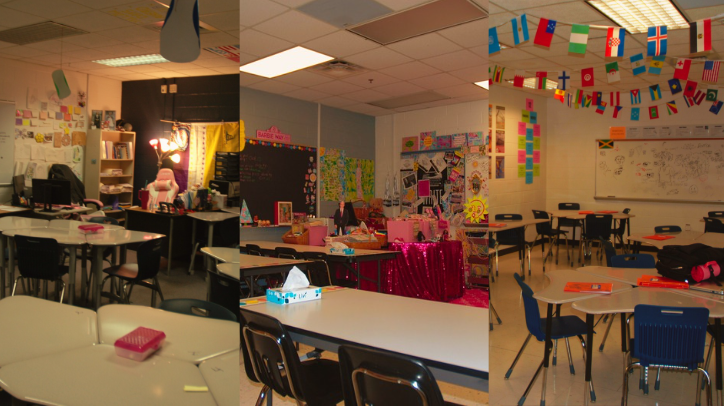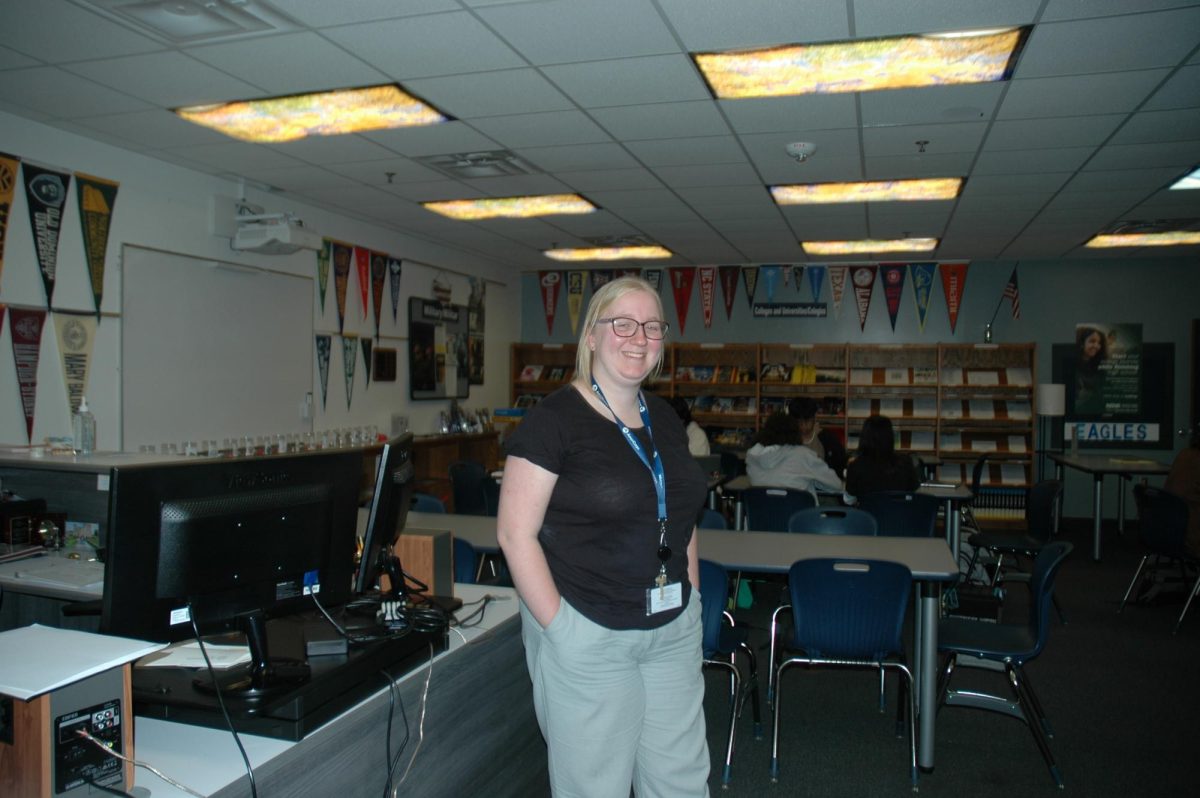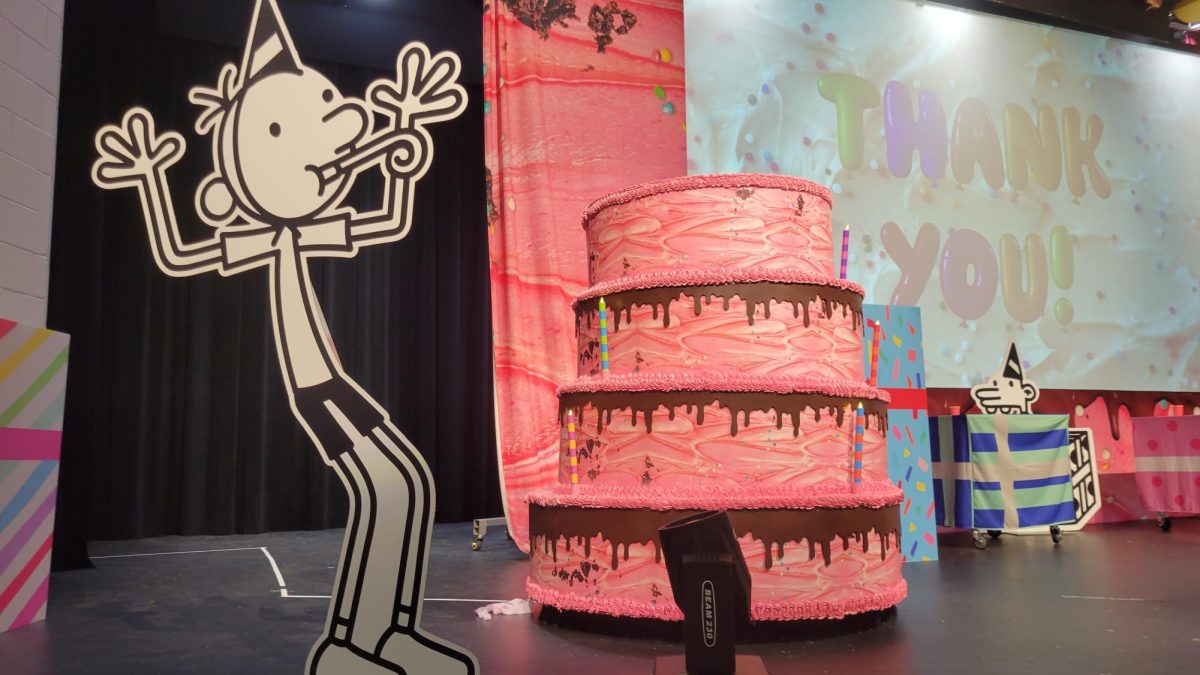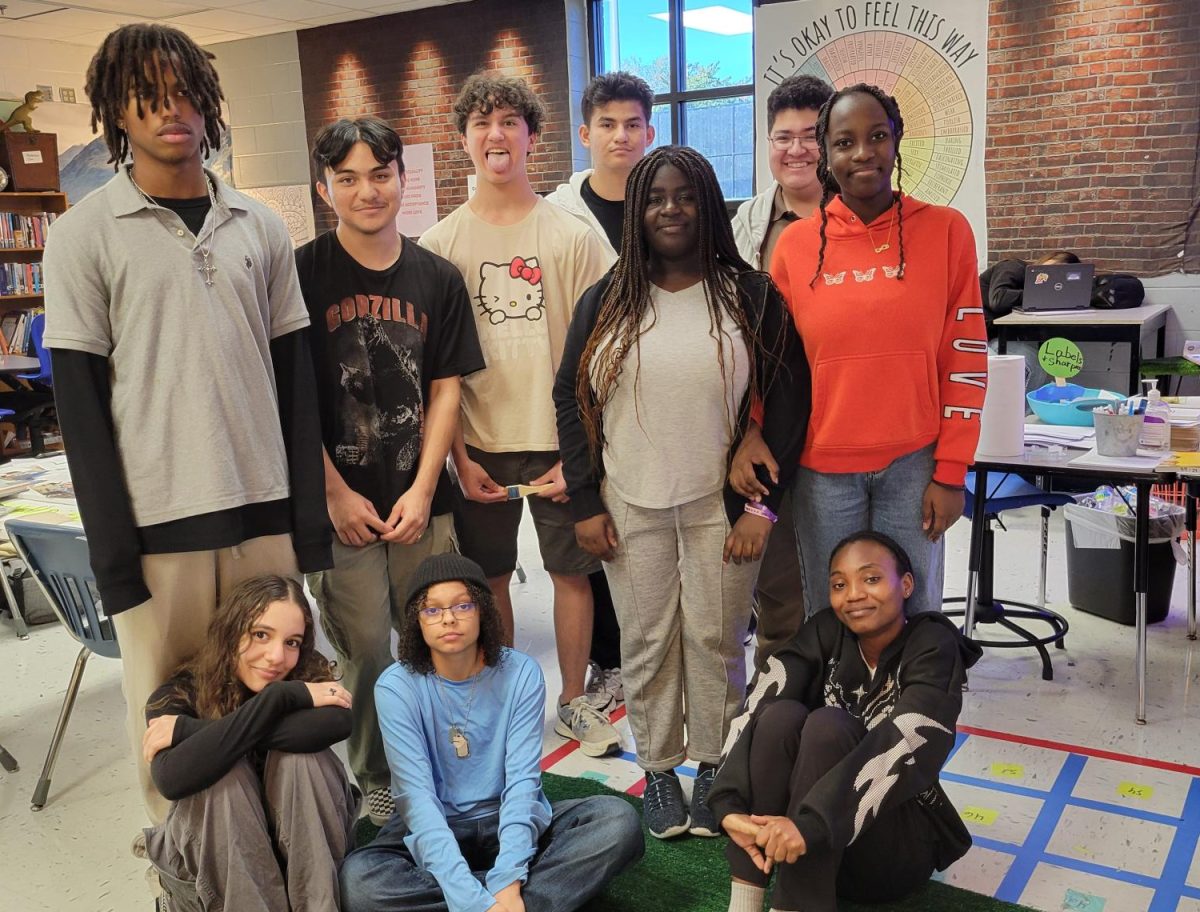Classrooms are more than just rooms for teaching—they’re canvases where teachers express who they are while creating a comfortable place for students to learn.
“When I started at Osbourn and came to my room for the very first time, I found my room very sad because it was just gray walls, and it felt very depressing,” said Ms. Miller, the Osbourn journalism teacher. Empty classrooms can feel cold and unwelcoming, making it hard to concentrate or feel inspired. That’s why Ms. Miller decided to make her classroom more inviting. “So, I immediately started brainstorming ways to make it more exciting.”
Decorating a classroom takes time, creativity, and often a teacher’s own money. At Osbourn High School, some educators have found ways to make their classrooms both meaningful and memorable by involving students in the process.
“Mine is honestly just years of gathering,” said Mrs. Morgan, an AP History teacher at Osbourn. “Last year, I had some of my students help me by painting ceiling tiles.”
At Osbourn, painting ceiling tiles has become a tradition among students—especially for graduating seniors or juniors who want to leave something behind. “Most of my decorations are related to the content that I teach,” said Ms. Daley, a U.S. History teacher. “Over the years, students have asked to decorate ceiling tiles, so now I’ve started collecting student artwork.”
These ceiling tiles are more than simple decorations—they preserve memories and symbolize the connection between teachers and students.
Some educators use their classrooms to reflect their personality, while others focus on tying the decor to what they teach. “It’s definitely my personality—lots of pink and historical dolls,” said Mrs. Morgan. “I think I try to be energetic, and my room represents my calming yet energetic energy.”
Ms. Miller shared a similar sentiment: “It definitely represents me because it represents things that I like, like the posters are pictures I took myself. In terms of subject matter, they don’t really make journalism decorations, so the photos represent photojournalism. I just try to make my room a happy place.”
As students, we know how much the environment can affect learning. It’s hard to focus when you’re surrounded by blank, colorless walls. Ms. Daley explained, “I like to believe that having a colorful ceiling and walls is more engaging than having no decorations.”
Many students agree. “A decorated classroom makes me feel more comfortable because when I’m comfortable, I’m able to engage in my classes more,” said Mackenzie Fitterer.
Comfort in school is essential. Every day, students look for small ways to feel more at ease—whether it’s listening to music or wearing pajamas. But with the phone ban in place, students have lost one of their main sources of comfort. “They make me feel more comfortable and safe, and it makes the class feel less boring,” said Zane Homos, another student at Osbourn. “If the classroom was all white with desks, it would feel like a prison. Decorated classrooms feel more welcoming.”
Students can also sense when a teacher truly cares about their classroom. That passion often shows through in the details. “It’s probably more comfortable because it’s more colorful and homey,” said Michelle McDonelle. “You can tell when a teacher cares—like Mr. Whitley’s room. I like it. It’s pretty nice.”
There’s nothing wrong with a plain classroom, but the environment can shape how students learn and interact. A decorated classroom can spark conversation, build comfort, and help students feel more connected. You know those icebreakers teachers do at the beginning of the year? Students usually dread them—but when they already feel connected to their teacher and surroundings, those moments don’t seem so bad.
After all, a classroom isn’t just a place to learn—it’s a place to feel inspired, comfortable, and connected.














Larry Lizalde • Nov 5, 2025 at 12:17 pm
A teacher who has a really nice looking classroom is definitely Ms. Hayes. It makes me feel at home and gives a good sense of belonging!